4 Most Common Colors of Abyssinian Cats
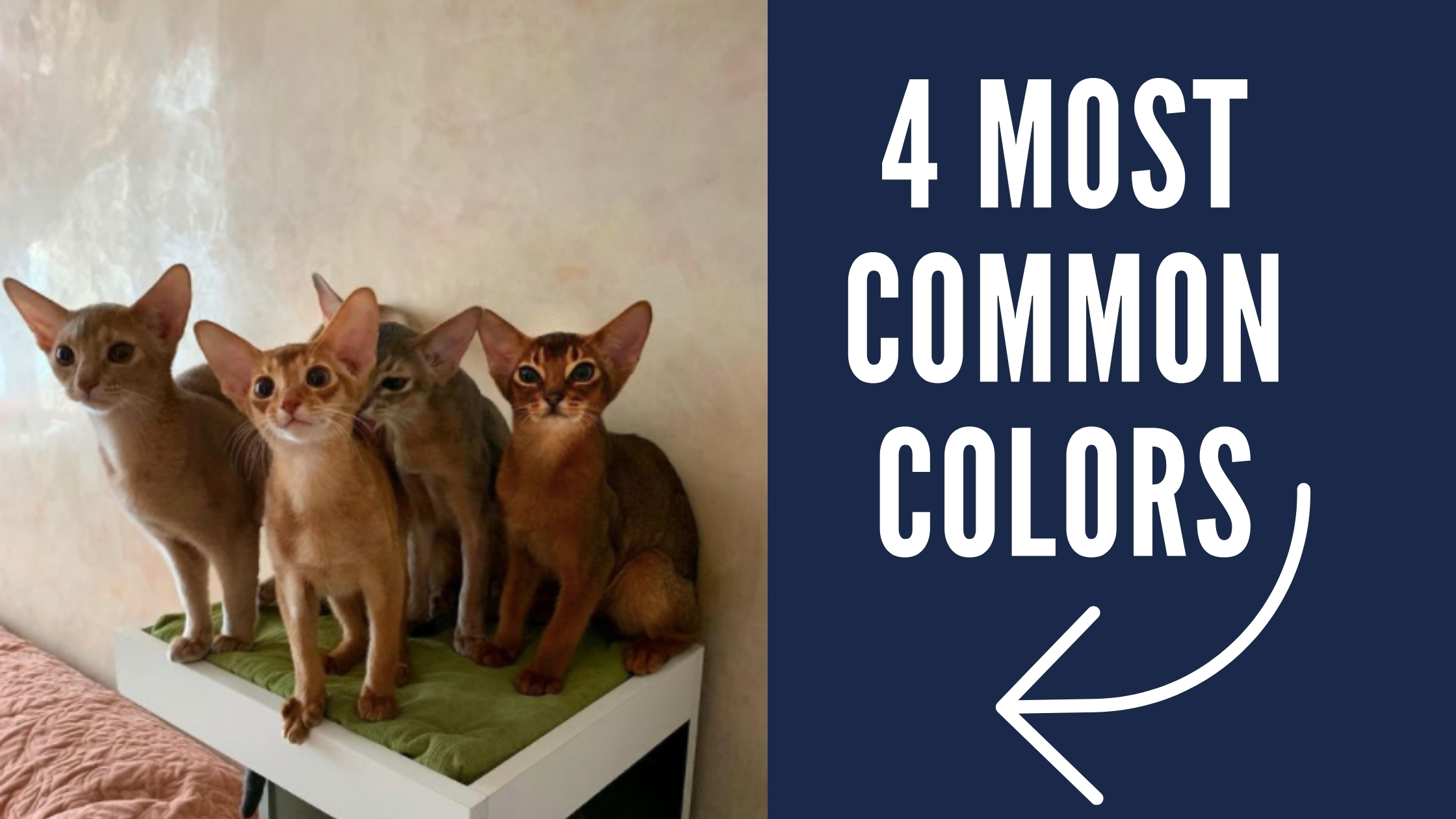
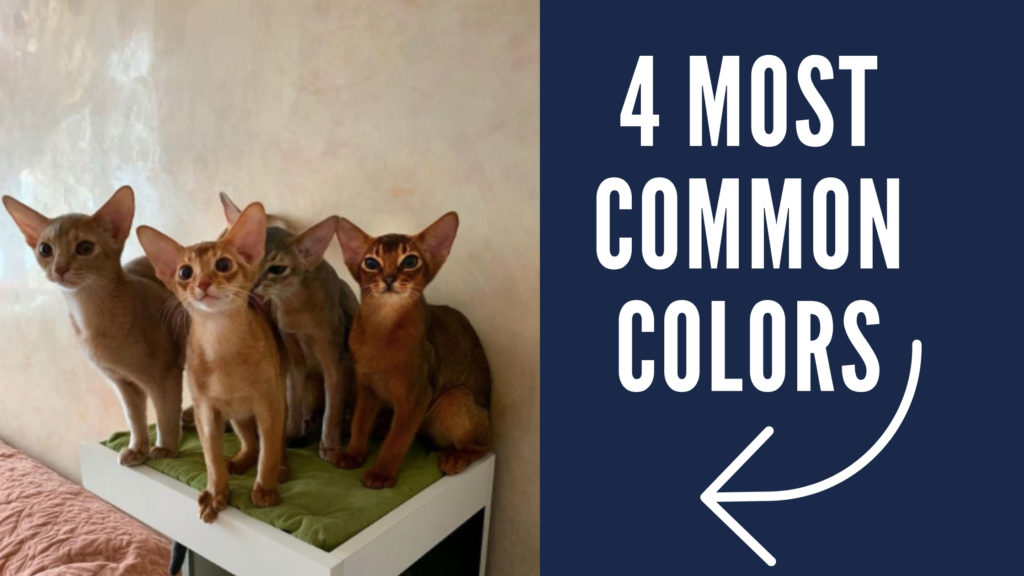
Abyssinian colors and breed standard.
The singular defining feature of the Abyssinian breed is its richly colored, ticked tabby coat free of markings on its legs, tail, and neck but exhibiting dramatic facial markings.
Each hair is “ticked” with four to six bands of color, dark at the tip, lighter at the roots, alternating dark and light. In the ideal Abyssinian the color at the root is bright and matches the color on its undersides and the insides of its legs.
There are four colors in the Abyssinian breed.
Ruddy
When it comes to Abyssinian cat colors, the most popular is ruddy. It is one of the most beautiful of cat colors. Some say the overall appearance resembles burnt sienna. Others think this color makes the cat resemble a small cougar. It certainly gives the Aby its distinctive “wild cat” look.
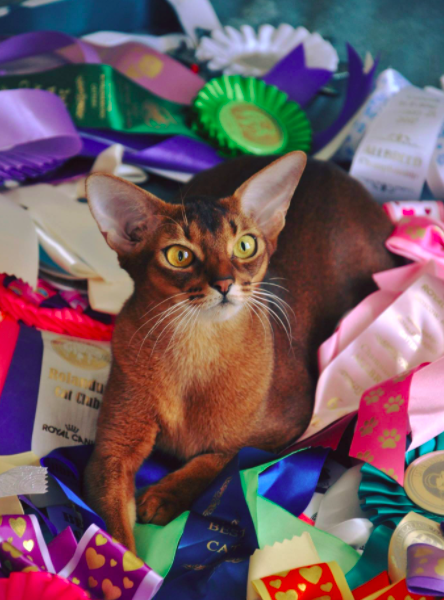
Base color: the Usual / Ruddy Aby has a warm reddish base color. It is an apricot color – also described as burnt orange. The insides of the legs and the underbelly should be of the same color as the undercoat: a warm reddish color.
Ticking color: the ticking or darkest color is black, which you find in the back stripe and tip of the tail as well. Also the feet and the back of the hind legs are black.
Pads: The pads are black or brown, there is black between he toes, and this color extends slightly up the backs of the paws.
Nose: the nose leather is of brick red color.
Red
The next color to be recognized was red, with chocolate brown in the darker bands of color giving the impression of a red iridescent cat. The red variation of the Abyssinian cats was originally a spontaneous mutation of a ruddy Aby. This color variation lack the black color of the ruddy Aby. The gene that causes the red color is recessive. This means that for a kitten to become red it needs to get the red gene from both its parents.

Base color: the base color of the red Aby is a bright apricot or yellow-brown, and the same color is on the insides of the legs and the underbelly.
Ticking: the ticking color is chocolate brown, and the back stripe and tip of the tail are of the same color. The feet and the backs of the hind legs are also chocolate brown.
Pads: the pads are pink, and there is chocolate color between the toes which extends slightly up the backs of the paws.
Nose: the nose leather is pink.
Blue
The blue Abyssinian has slate blue as its darker bands of color with alternating bands of warm beige, giving the impression of a warm dark blue cat with a much subtler look. You could say that the blue Abyssinian cat is a pastel version of the usual or ruddy Aby.
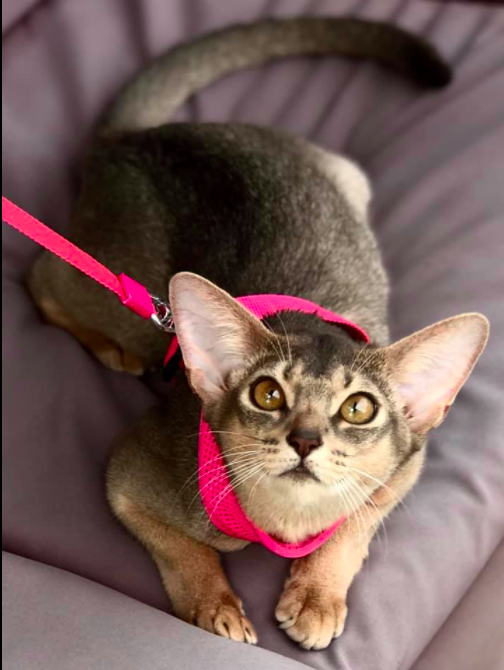
Base color: The base color is a warm beige and white color is undesirable. It is also on the insides of the legs and underbelly.
Ticking: the ticking color is blue – various shades of slate blue. The back stripe and the tip of the tail are of the same blue color, as are the feet and the backs of the hind legs.
Pads: The pads are mauve, and there is slate blue between the toes and reaching slightly up the backs of the paws.
Nose: The nose leather is dark pink.
Fawn
Rounding out the colors of the Abyssinian is the fawn, which has light cocoa darker bands and warm rose-beige lighter bands of ticking, giving the impression of a warm antique rose-colored cat. If the blue Aby was a pastel version of the usual Aby, then the fawn Abyssinian cats are a pastel version of the red Aby.
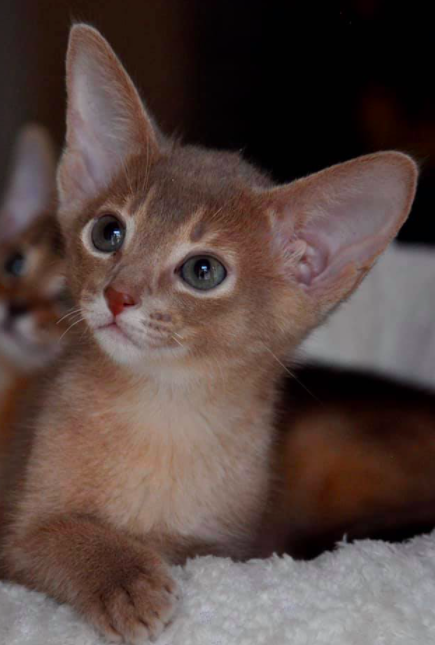
Base color: the base color is a pinkish cream, white undercoat is undesirable.
Ticking: the ticking color is dark cream. The back stripe and the tip of the tail are of this dark cream color.
Pads: the pads are pink-mauve, and there is a deep pinkish color between the toes, which extends slightly up the backs of the paws.
Nose: the nose-leather is salmon-colored.
Abyssinian breed standard.
Dark lines extend from the eyes and the brow, and the eyes are accentuated by fine dark lines, encircled by light colored areas consistent with the ticking color. Cheekbone shading and dots and shading on the whisker pads are desirable enhancements.
The head of the Abyssinian should be a modified wedge with almond shaped eyes. The ears should be alert, large, and moderately pointed. They should be broad and cupped at the base and set as though listening. The head, eyes and ears should all fit together in a complimentary fashion favoring neither extreme length nor extreme shortness.
The body type of the cat should strike a medium between the extremes of the cobby and the svelte lengthy type. In other words, it should be medium long, lithe and graceful, but showing well-developed muscular strength without coarseness. Proportion and general balance are more desirable than mere size. The cat should appear to be long on its legs and standing on tiptoes; the typical Abyssinian usually likes to arch its back when it stands alertly. Put together, this striking cat seems to have just walked out of the forest, with a look reminiscent of its wild origins so many years ago, tempered with the knowledge that the Ancient Egyptians showed them such reverence.
The singular defining feature of the Abyssinian breed is its richly colored, ticked tabby coat free of markings on its legs, tail, and neck but exhibiting dramatic facial markings. Each hair is “ticked” with four to six bands of color, dark at the tip, lighter at the roots, alternating dark and light. In the ideal Abyssinian the color at the root is bright and matches the color on its undersides and the insides of its legs.
An Abyssinian kitten is born darker than its eventual color will be. The color is totally developed when it reaches maturity.

